Baten Bahini of Tangail
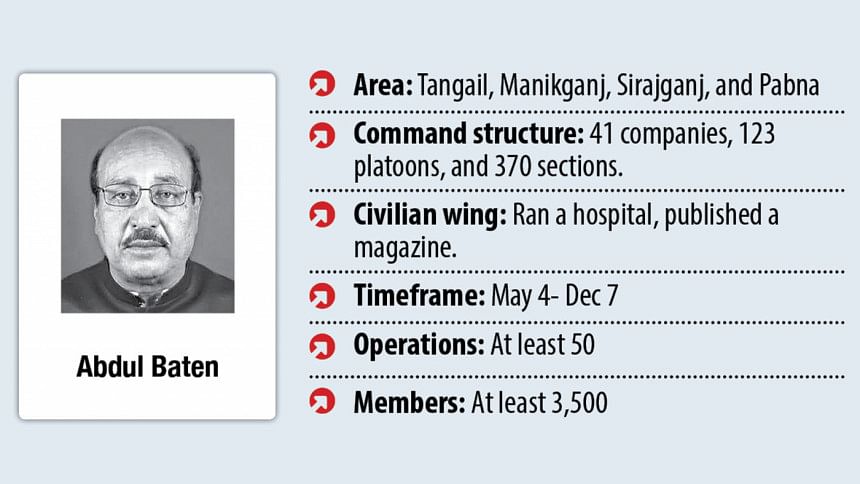
During the 1971 Liberation War, dozens of regional forces emerged across Bangladesh. Just as the freedom fighters trained under the sub-sectors and the Bengal Regiment fought valiantly, these regional forces also put up tough resistance against the Pakistan army. In the month of victory, we bring you the stories of some of these heroic forces.
During the Liberation War, two powerful regional forces challenged the Pakistani army in Tangail.
One was the renowned Kaderia Bahini, led by Bangabir Abdul Kader Siddique, and the other was the lesser-known but formidable Baten Bahini.
The latter was led by Khandaker Abdul Baten, then vice president of the Student Union's Tangail Saadat College unit.
Originating in Konra village of Tangail's Nagarpur upazila, the Baten Bahini eventually grew to over 3,500 members and went on to spread across the surrounding districts of Manikganj, Sirajganj, and Pabna.
In February this year, The Daily Star spoke to about 40 freedom fighters of Baten Bahini during a visit to Tangail, Sirajganj, and Manikganj.
From the book "Mohan Swadhinota Juddho - 1971 Baten Bahini" by Mir Shamsul Alam Shahzada and interviews with Baten Bahini members, it was learnt that a 10-member resistance committee was formed in Konra village on April 2 under the leadership of Mir Shamsul Alam Shahzada following the March 25 massacre. The next day, Abdul Baten arrived in Konra and began mobilising residents of Konra and nearby villages for war.
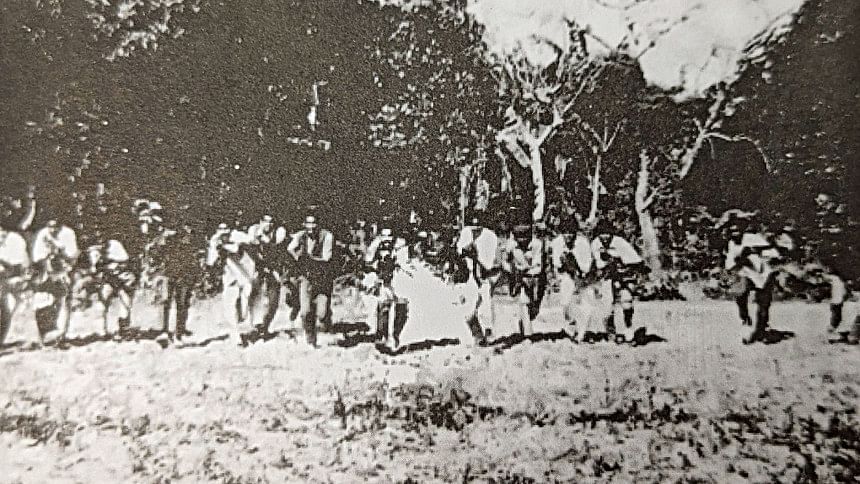
FORMATION
Mir Shamsul, also a Baten Bahini member, told this newspaper that two rifles and 45 rounds of ammo handed over to the force by the then Lauhati union chairman, who got them from two soldiers of the East Pakistan Rifles, were the first weapons acquired by the force. A week later, freedom fighters discovered eight rifles dumped in a ditch in Tarutia village. These weapons were used to start training.
On April 20, a locally organised group of fighters led by Siddique Hossain joined Baten Bahini, significantly strengthening the force's ranks.
Siddique told this newspaper, "Immediately after Bangabandhu's speech, we started mobilising the local people of Shahjani village in Bharra union under Nagarpur upazila.
"As the war began, we managed to get our hands on some weapons from EPR soldiers and local firearm owners and soon began training. Later, we joined forces with Baten Bahini, bringing with us 30-35 rifles and one LMG."
Towards the end of April, another group of 35 freedom fighters led by Fazlul Haque Mallick joined Baten Bahini, also bringing with them arms and ammunition, Fazlul told The Daily Star.
Abdul Malek, a Baten Bahini member, said, "Our training initially took place in Lauhati. Later, we opened training camps in Tangail's Shahjani village and Manikganj's Tilli village."
According to Mir Shamsul's book, Baten Bahini initially consisted of locals. However, over time, it expanded to include civilians, as well as members of the East Bengal Regiment, East Pakistan Rifles, police, and Ansar who had abandoned their duties or were on leave.
Mir Shamsul said the force comprised 41 companies, 123 platoons, and 370 sections. The freedom fighters of this force fought in over 50 battles during the war. These battles resulted in heavy casualties for the Pakistani army, with over a thousand Pakistani soldiers killed.
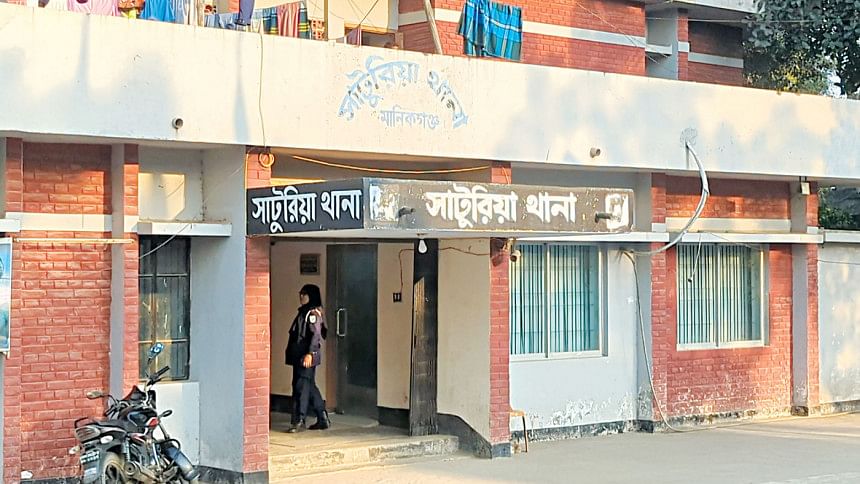
OPERATIONS
The first successful operation of Baten Bahini was the attack on Singair Police Station in Manikganj on the night of May 4.
Fazlul Haque Mallick, a freedom fighter who participated in the operation, said, "We attacked the police station at 11 o'clock in the night, amidst drizzling rain. Initially, we caught the Pakistani soldiers off guard. However, they eventually managed to mount a resistance. After two hours of fighting, they were forced to flee, leaving a large arsenal of arms and ammunition."
According to Mir Shamsul's book, on May 5, another group led by Lance Naik Mokhlesur Rahman attacked the Saturia Police Station in Manikganj and looted a number of arms and ammunition.
On May 17, Baten Bahini attacked the Daulatpur Police Station. After three hours of fighting, they emerged victorious, capturing the police station and raising the flag of Bangladesh there.
In the early hours of May 20, four Baten Bahini freedom fighters snuck into the Chauhali Police Station in Sirajganj. Taking advantage of the sleeping Pakistani soldiers, they made away with around two dozen G3 and .303 rifles, along with a large cache of ammunition.
At the end of May, Baten Bahini fighters, disguised as traders, got inside the Ghior Police Station and occupied it.
On the same day, another group carried out an operation at Dhalla Bridge, detaining 20 Razakars and seizing their arms and ammunition.
IMPROVISED ATTACK
Mir Shamsul said as a result of continuous attacks, the Baten Bahini was running out of ammunition. At that time, they were tipped off about the location of some ammunition abandoned at a village near Jabra Bridge in Manikganj. Later, two Baten Bahini companies went there and got their hands on 17 boxes of rifle rounds.
On their way back, locals urged Khandaker Baten to attack the gunboat that Pakistani soldiers were using to loot and burn down villages every week.
Having quickly improvised an ambush on the gunboat, the freedom fighters dug trenches on both sides of the river. Although the attack did not materialise on the first day, it was carried out late on the following night as the gunboat entered the freedom fighters' position.
The Pakistanis resisted, but coordinated fire from both sides of the river resulted in the deaths of 38 Pakistani soldiers. In addition to capturing five injured soldiers, the fighters seized a significant amount of arms and ammunition from the gunboat.
In July, Abdul Baten travelled to India to procure arms, leaving Abul Kalam Azad, head of the Arms Department, in charge of the force. Following news of Abdul Baten's capture in India, the force faced a loss of morale. During this challenging time, Abul Kalam Azad's dedicated efforts prevented the force from collapsing, Mir Shamsul writes in his book.
In the early hours of August 14, the Baten Bahini conducted a notable operation when the fighters attacked the Saturia Police Station for the second time, capturing it and raising the flag of Bangladesh in the morning, according to the book.
However, the Pakistani forces eventually recaptured the establishment after the freedom fighters had withdrawn.
On November 21, the Baten Bahini attacked the Saturia Police Station for a third time. In this battle, alongside 500 freedom fighters, local villagers in Saturia participated. Ziarat Hossain, a Baten Bahini member, was martyred.
Abdus Sattar, a freedom fighter who participated in the battle, said, "As planned, we attacked the police station around 3:00am. The Pakistanis retaliated from inside the police station. After several hours of fighting, as dawn broke, local villagers joined the battle, armed with whatever they could find.
"As their ammunition was dwindling following eight hours of continuous fighting, the Pakistani soldiers fled, leaving behind a number of casualties and their firearms."
On December 7, Baten Bahini attacked a large jute-laden boat carrying Pakistani soldiers in Dhalla union under Manikganj's Singair upazila, resulting in the deaths of 33 Pakistani soldiers.
Upendranath Sarker, chief of the intelligence wing, told The Daily Star that this was the last major battle fought by the Baten Bahini in the war.
CIVILIAN WING
Upendranath said, "In addition to our military wing, we also had a well-organised civilian wing, which focused on security, food, finance and justice, public relations, and leadership training."
Baten Bahini had also set up a mobile hospital to provide medical care to injured freedom fighters. A newspaper was also published to keep people informed about the war.
Nirendra Kumar Poddar, a Baten Bahini freedom fighter, said that the hospital was run by Bengal Regiment doctor Jahirul Islam and Mymensingh Medical College doctor Basanta Kumar Saha. "Furthermore, we published a magazine called 'Agnishikha,' edited by Ali Akbar Khan Dollar."
Baten Bahini freedom fighters received a fixed allowance. Mir Shamsul explained, "The freedom fighters in the force used to receive a monthly allowance, the fund for which came from donations made by generous, well-off members of society."
Translated and edited from Bangla by Subrata Roy.

 For all latest news, follow The Daily Star's Google News channel.
For all latest news, follow The Daily Star's Google News channel. 


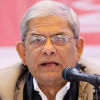


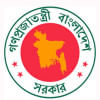


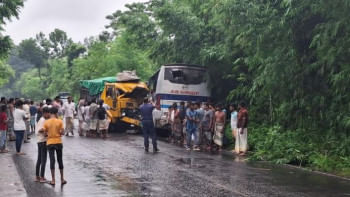
Comments